Whether you’re an experienced kayak angler or new to the idea, there is no doubt that finding the right gear for going on out the lake or the ocean can be time-consuming and confusing at times. But with so many great fishing kayaks on the market right now, there is no excuse to remain a shore-bound fisherman. I think that you will find that fishing kayaks are affordable and an inexpensive way to get off the shore and really focus on the fishing. Honestly, I think they are better than fly fishing canoes.
Now if you have never been in a kayak, then you might be intimidated at just the thought of trying to do your fishing out on the water from one of these things. Well, get those thoughts out of your head right now! It is honestly not as bad as it seems. In fact, you will find that it’s not hard to fish from a kayak and it will soon become your preferred way of doing things. So, get your fish finder ready, cause it’s about to be fishing time. Check out this list of the top 10 fishing kayaks, with reviews for my top 5 favorite yaks below.
The Top Fishing Kayaks for 2018
| Picture | Name | Type | Our Rating |
|---|---|---|---|
 | BIC Yakkair | inflatable |  (5 / 5) (5 / 5) |
 | KL Industries Sun Dolphin Journey SS | hard-shell |  (3.8 / 5) (3.8 / 5) |
 | Lifetime Sport Fisher | hard-shell |  (4.4 / 5) (4.4 / 5) |
 | Intex Explorer K2 | inflatable |  (4.2 / 5) (4.2 / 5) |
 | Sea Eagle SE370KP | inflatable |  (4.3 / 5) (4.3 / 5) |
 | Sevylor Tahiti | inflatable |  (4.2 / 5) (4.2 / 5) |
 | Coleman Colorado | inflatable |  (4.6 / 5) (4.6 / 5) |
 | Sun Dolphin Excursion | hard-shell |  (4.1 / 5) (4.1 / 5) |
 | Hobie Pro Angler 14 | hard-shell |  (5 / 5) (5 / 5) |
The Ultimate Fishing Kayak Shopping Guide
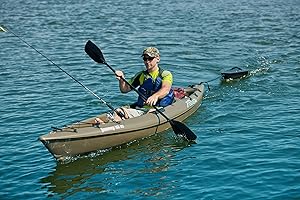 If you are ready to do your shopping now, we have a few tips to share with you here on Outdoorsman Time that will help you pick the best value fishing kayak for the money. We’ve broken it down into four key things to consider when you’re comparison shopping out there.
If you are ready to do your shopping now, we have a few tips to share with you here on Outdoorsman Time that will help you pick the best value fishing kayak for the money. We’ve broken it down into four key things to consider when you’re comparison shopping out there.
Types of Fishing Kayaks
Probably the first thing that you need to do before buying a new kayak for fishing is to really figure out what you need because there are different types of kayaks on the market. Will you be doing your fishing in a pond, a river, a lake, or will it be some saltwater fishing out in the ocean or a harbor? Do you intend to fish alone or will you take out some buddies or family members?
You will find these main types of kayaks for anglers:
- sit on top kayaks
- sit inside kayaks
Now, most people prefer to have a seated kayak since fishing takes a long time. However, what you might not know is that some are single seats while others are double seats. This is really only important if you plan on fishing with someone else. Then, you will want to be sure to look for one of those double seaters.
Rigged vs Unrigged
Another thing that you will notice when comparing the top fishing kayaks is that models are sold either are rigged or unrigged.
- The unrigged version is just the simple stock version of the vessel while the rigged one is the angler version.
- Now, if you are completely new to this and need to buy a good fishing kayak for beginners, then you will probably want to go with a rigged version. But, once you get a feel for things and have been doing this a while, then you will likely want to get the unrigged version so that you can outfit it on your own since you can customize it.
Go with whatever makes it easier for you out there!
Things to Consider
1. Kayak Design Matters. When you’re comparing vessels, you have to make decisions on stability vs speed and width vs length. The best choice is really a personal one for you to make. Personally, I prefer stability above all things. Do keep in mind that shorter kayaks track slower through the water. And the kayaks that are wider offer more stability. I think the best bang for your buck lies in a kayak that stable and wide with a clear deck.
2. Rigged vs Unrigged. I talked about this up above, but it is pretty important. A stock, unrigged kayak is going to be the cheaper option every single time. That being said, I only recommend this type of boat if you’ve got enough experience to know how to rig it yourself and keep the balance optimal. No one wants to be swimming around with the fishes instead of catching them, right?
3. Sit-in vs Sit-on-top. The best choice here depends on where and how you’ll be fishing. Will you be in cold water or water that has a strong current (like waves)? If so, go with a sit-in fishing kayak to stay dry and increase stability in windy conditions. Sit-ins also give you the bonus of storage that is built-in.
The disadvantages are that your visibility is limited and it can take a while to get in and out of the thing. For those reasons, sit-on-top is the most popular type of fishing kayak. Of course, if you’re in windy conditions then the boat can be unstable and it can be a wet ride. But, it is easy to get out and do some wading and to add some accessories to the boat.
Fishing Kayak Reviews – My Top 5 Picks Rated for 2018
Now that you know what to look for when shopping for your new fishing kayak on sale, let me share some of my favorite models for this year. These are all great boats that you can take out on your weekend fishing trip. And, I think you will find that there are plenty of affordable models on the market to fit any budget.
1. KL Industries Sun Dolphin Journey SS Kayak
If you need a fishing kayak that offers a lot of value for the money, then look no further than the Sun Dolphin Journey SS. It has an amazingly low price but offers you a lot of bang for your buck. And honestly, it has everything the beginner kayak angler needs from their boat.
The seating area for this one is an open cockpit design, and it is both large and comfortable. You also have plenty of space for all your gear and accessories, including a waterproof dry box for things like your fish finder or phone, which is pretty cool.
- It comes with a portable accessory carrier, which comes in handy a lot. You can even tow it behind the kayak, which is really nice. Another cool feature are the adjustable foot braces, which makes it a comfortable ride for anglers of all sizes and heights.
This is a good, cheap kayak for fishing that is a lot of fun to use. However, do know that the seat is not padded like the higher end models. However, that can easily be replaced, if you’re interested in that sort of thing. I think it’s also important to note that there are no scupper plugs on this model, which means that you have to physically tip the boat upside down to drain any water that gets inside of it.
2. Lifetime Sport Fisher Kayak with Paddles and Backrests
This is another great value rigged fishing kayak for the money. The Lifetime Sport Fisher Kayak is priced similarly to the KL Industries model above. And, you get some of the same features and value with this one. You also get two sport paddles with this boat, which is great because it saves you a little money on gear.
This 10-foot fishing kayak is designed for either single or tandem use, which makes it a great versatile choice. And the backrests are nice and soft so that it is a comfortable day out on the lake. You can actually get up to three people in it’s ergonomic seating, which is nice for a family fishing outing. Or, bring the dog along! The maximum capacity is 500 pounds, which is pretty decent at this price point.
- One of the things that I really like about this one is that it has a tunnel hull design, which means that you can easily stand or sit in it without tipping or losing stability.
There is space for four fishing poles in the holders, a dry storage hatch, scupper holes and ditty trays (among other notable features). There are also multiple footrests for fishermen of all sizes and it has molded handles so that is is easy to carry the boat to and from the water.
Overall, this is a very stable kayak with some great features for the money – and all at a very affordable cost.
3. Intex Explorer K2 Kayak
Right now, this is really one of my favorites of the summer, and for good reason – it has an affordable price and lots of room! Plus, it just happens to be a good quality kayak for the money. It has some good features and is big enough for two people. If you need a two-seater, I think you will really like the value that the Intex Explorer K2 offers. It’s also great for the kids!
This inflatable fishing kayak only comes in yellow and has seats for two people. However, you can use this for just one person as the seats attach to the bottom with velcro, so it is easy to remove one of them. I also really like that the seats have a backrest – awesome for those long waits for something to take the bait.
It has a low profile, which is perfect for doing your fishing in lakes and rivers with mild waters. And for some directional stability, this kayak has a removable skeg.
In addition to the removable skeg, it comes with:
- two paddles
- two adjustable seats
- dual action air pump
- repair kit
It is quick to inflate and deflate, which makes taking this thing out on the water a breeze.
5. Sea Eagle Inflatable Kayak with Pro Package
This high quality sport kayak is great for fishing and really performs well out on the water. The Sea Eagle Inflatable does have two seats, but I find is easier to take this one out as a solo fishing kayak unless you’re with someone who knows how to keep the balance with you.
First, this thing fully inflates in under 10 minutes time. Deflating is just as quick, which is great when you’re in a hurry to get home and show your old lady what you caught out there. Other features you might want to know about for this lightweight fishing kayak include:
- NMMA Certified
- 3 deluxe one-way valves
- Self-bailing drain valve – great for ocean surf and whitewater
- Lashed-down inflatable spray skirts
- Weight capacity of 650 pounds – the perfect kayak for heavy guys
- Can carry up to 3 people
- Can handle whitewater up to class III
- Good for fishing, whitewater, paddling, skin diving, yacht tending and flatwater recreation
- Removable seats
- Rear and front rear rope handles
- I-beam construction floor
- Rugged PolyKrylar can withstand dog paws! no puntures!
- Pressure gauge and repair kit included
- Get better tracking and speed with 2 skegs on the bottom
- Two paddles included
You and your dog will just love going out in this one – especially since you don’t have to worry about those dog paws poking holes in the kayak!
How To Take Care Of Your Fishing Kayak
Once you get yourself a new kayak for fishing, you will want to make sure that you take good care of your investment. As you probably already know, these things are not cheap so it is a good idea to just do some basic kayak maintenance every so often to keep things in tip-top shape so that your kayak lasts you for many years to come.
You basic kayak maintenance routine falls into two different categories – taking care of it during fishing season when you’re out on the water using it regularly and taking care of it during the off season when it’s in storage.
In-Season Maintenance Tips
Since it’s fishing season right now, let’s start with what to do during fishing season. Here are some of the top things to remember when using your kayak so that you take really good care of it.
- Never drag it on the ground – always carry your kayak to avoid damaging the bottom on the ground’s rough and uneven surface
- UV protection is important – just like you skin, the sun’s UV rays can damage the surface of the kayak. At the start and end of the season, use some spray-on UV protectant on the boat’s surface. We recommend 303 protectant spray for the best results.
- Cover it up – when you’re not using it, keep that kayak cockpit covered. You’ll keep out rodents and other pests, organic debris and even mold. So, get yourself a good quality kayak cover.
- Practice proper kayak storage – once dry, make sure that you store your kayak out of the sun and in the proper manner. Keep reading below for more outdoor kayak storage tips.
More on storing your kayak during the in-season: For a plastic kayak, you’ll want it stored on it’s edge in order to keep the hull formation in tact. Or, you can opt for upside down kayak storage where each side is supported on the deck, it is raised off the ground and a tarp is just draped over it so that you’re not restricting air flow.
Off-Season Maintenance Tips
In the off-season, your fishing kayak maintenance is really all about proper storage techniques. And before you put it away, you better make sure that thing is both dry and clean. Get yourself a soft cloth or sponge and wipe everything down. I like to start out by removing any loose or detachable pieces and then hosing down the entire boat.
After that, drain out any water and use that cloth or sponge to wipe everything clean. Then, dry it with another clean, soft cloth. Just make sure before you dry it that you’ve cleaned out every nook, cranny and crevice. The last thing you want is a family of insects to hatch in the kayak while it’s in storage!
And remember to clean all the pieces and accessories as well. This includes your paddle – so, take it apart and give it the same treatment.
- This is also a good time to check and tighten up any loose bolts or screws. I suggest having a can of WD40 available as well – I know that I usually end up needing some!
Now, before you start putting it away until next season, remember to use that UV protectant spray on it now that the season is over and done with. Keep that kayak surface looking good and in the best condition possible!
Since the season is over, put that cover on the kayak, take it in your garage, shed or other indoor storage space and put it on it’s rack. If you don’t have a kayak storage rack, hopefully, you have space to store it standing up on its stern (this causes the least amount of stress on the boat). Other good storage option include a hoist system, sling system, or something like the Boone Blue Kayak Crib 2 Paddles cheap kayak storage rack.
Of course, if you have a folding or inflatable kayak, then you don’t really have to worry about these storage issues. Instead, just inspect the boat for any damage before folding or rolling up until fishing season rolls around again next year (after you clean it, of course!).
Whether you’re on a tight budget and looking for something like the best fishing kayak under $400 for the money or just the best value option, I’m certain that you’ll be able to find what you’re looking for out there.
Best Kayak UV Protectant Spray
 It might sound weird, but the sun’s ultraviolet rays can damage more than just your skin. They are also harmful to your kayak! So, if you want to keep that kayak of yours looking good and performing well without any problems when you take it out fishing, then you need to be protecting it from the UV rays. If you don’t, then you can expect the surface of your kayak to start to crack and fade.
It might sound weird, but the sun’s ultraviolet rays can damage more than just your skin. They are also harmful to your kayak! So, if you want to keep that kayak of yours looking good and performing well without any problems when you take it out fishing, then you need to be protecting it from the UV rays. If you don’t, then you can expect the surface of your kayak to start to crack and fade.
Protecting the kayak is actually really easy. In fact, all you have to do is spray the exterior of the vessel with some UV protection spray at the start of the season. Once the season is over and you’re ready to put that kayak into storage for the winter, just spray it down again.
That is really all it takes – two applications of the spray on the kayak each year!
So, what do you look for to get the best UV protection spray for your kayaks? Well, you’ll need something that is designed for vinyl. Often, you can find this spray at your local marine equipment shop or auto accessories shop (the same stuff is often used on personal vehicles). Or, just order the top brand online from Amazon and have it shipped right to your door.
 As an experienced kayaker, I think the best UV protection spray for the money is 303 spray. Just ask any kayaker out there and they will agree with me. Don’t believe me? Check out this forum thread for the proof.
As an experienced kayaker, I think the best UV protection spray for the money is 303 spray. Just ask any kayaker out there and they will agree with me. Don’t believe me? Check out this forum thread for the proof.
Applying this stuff to your kayak is very easy. You just spray it on and that’s it. Now, before you spray it, make sure that the boat is both clean and dry for the best results. Otherwise, it might not work as expected.
And of course, remember to store the kayak in the shade when it is not in use to prevent any extra damage to the surface.
With this stuff, you’ll keep that kayak of yours looking good for many years from now. So, protect that investment today.



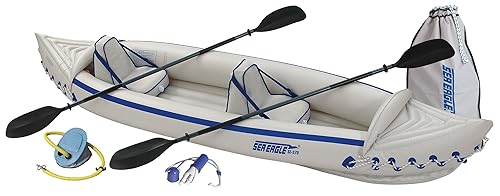
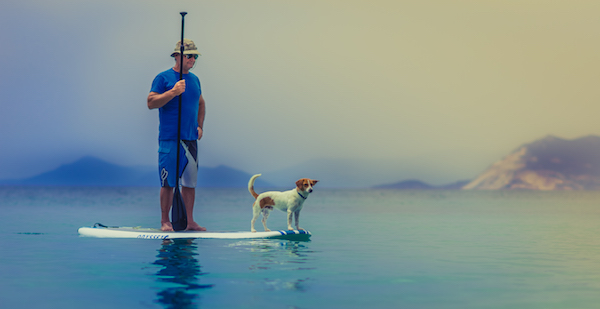 Stand up paddle boarding is quickly becoming one of the most popular sports around. It is a great form of exercise and fun that nearly anyone can enjoy. There are a wide variety of board shapes and sizes, all of which perform differently than one another. The reason for this is that stand-up paddling requires less skill than more traditional forms of surfing: just stand on your board and paddle yourself around.
Stand up paddle boarding is quickly becoming one of the most popular sports around. It is a great form of exercise and fun that nearly anyone can enjoy. There are a wide variety of board shapes and sizes, all of which perform differently than one another. The reason for this is that stand-up paddling requires less skill than more traditional forms of surfing: just stand on your board and paddle yourself around.





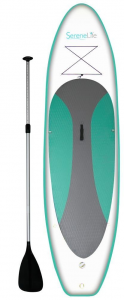

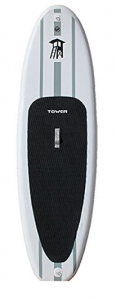
 The first thing to consider when buying a stand-up paddleboard will be to decide exactly what form of paddling you will be doing. Have you decided to take up stand up paddling as a hobby or recreation? If so, you will likely only need a board that can handle small to medium sized waves. In this case, your main consideration will be stability.
The first thing to consider when buying a stand-up paddleboard will be to decide exactly what form of paddling you will be doing. Have you decided to take up stand up paddling as a hobby or recreation? If so, you will likely only need a board that can handle small to medium sized waves. In this case, your main consideration will be stability.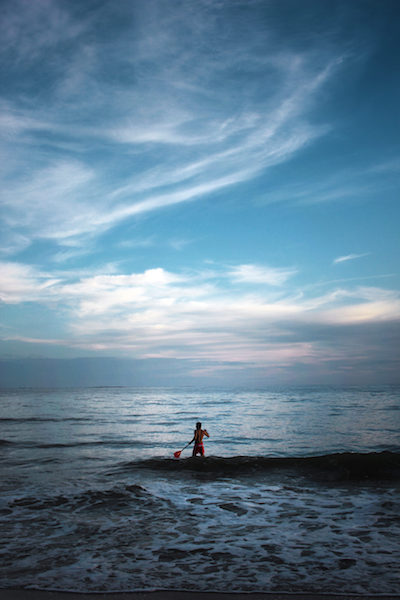 Another option for SUP purchaser is adding two “sidebites” on the undercarriage of your board. This will provide even more stability and straight forward motion than single fin models. It is usually recommended that these sidebites be about half the size of the middle (and larger) fin. Of course, this really depends on your board make and model. For best results when replacing your fins, contact the board’s manufacturer.
Another option for SUP purchaser is adding two “sidebites” on the undercarriage of your board. This will provide even more stability and straight forward motion than single fin models. It is usually recommended that these sidebites be about half the size of the middle (and larger) fin. Of course, this really depends on your board make and model. For best results when replacing your fins, contact the board’s manufacturer.